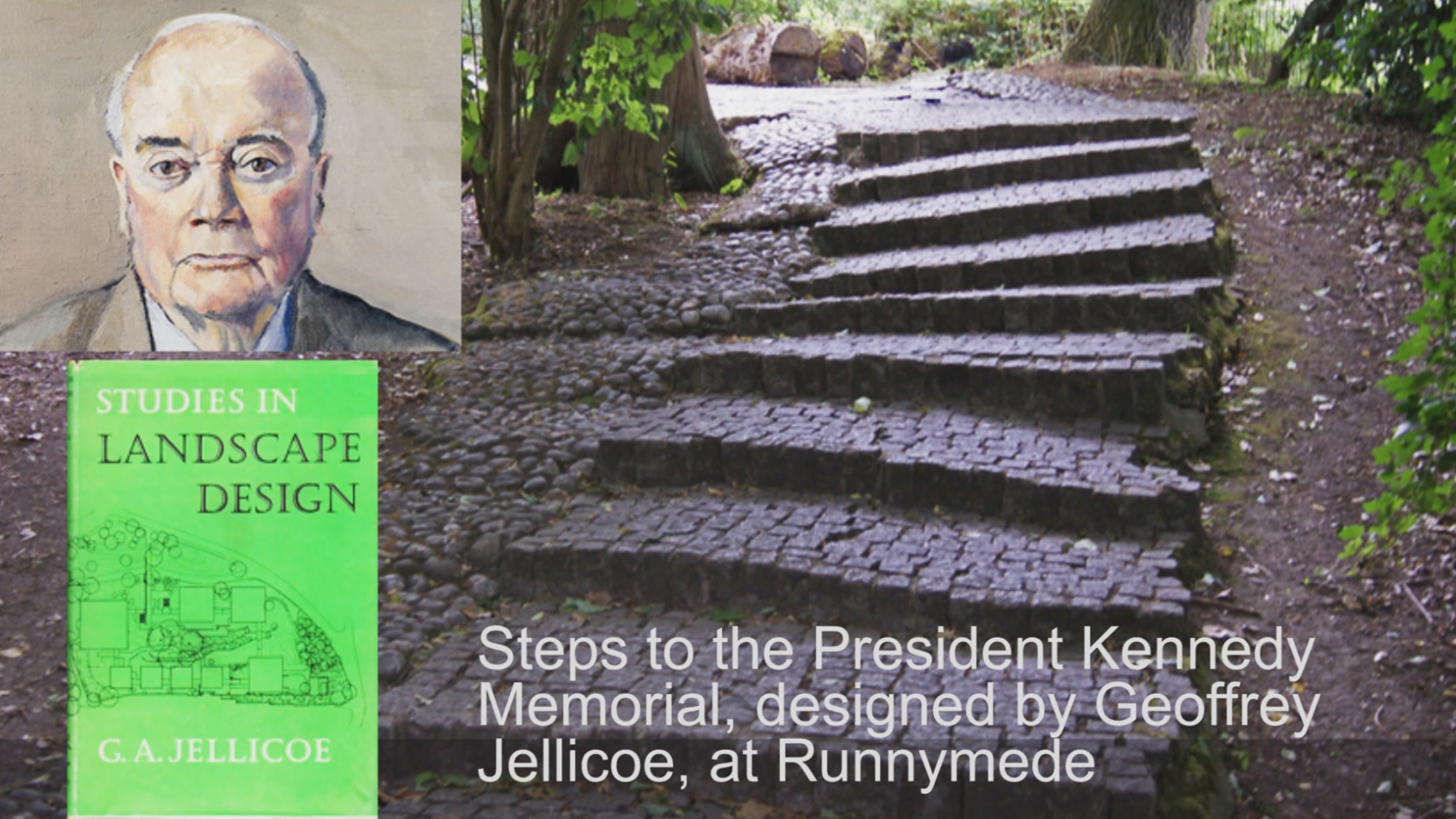Geoffrey Jellicoe lecture on landscape drawing and draughtsmanship
Jellicoe remembers learning to draw at the AA in the 1920s. As he explains in this video, he then went to Italy with Jock Shepherd to study, survey and draw its renaissance gardens. Intimidated by his friend’s graphic talent Jellicoe gave up drawing for 50 years. But when he began drawing again, in the 1970s, Jellicoe developed a unique approach, initially for The Landscape of Man. His drawings became tuned to the spatial and textural qualities of landscape architecture, and to the task of explaining design projects.
Shepherd’s drawings have a solemn and spiritual classicism. Jellicoe’s drawings have an expressive and narrative romanticism. Both draughtsmen display a quality, which Jellicoe describes as luminosity.
Among many interesting points made in the video Jellicoe says that drawings should be small and that even working drawings should have ‘feeling’. Possessing no great knowledge of plants, Jellicoe aimed to represent their qualities in plan. He ‘thought with his pencil and talked with his pen’. His wife, Susan, was able to generate planting designs from his unique graphics.
Jellicoe’s lecture is a valuable record of a design approach which is now threatened by the advance of Computer Aided Design in all its forms.
My view is that physical models and pencils are best for thinking, while computers are best for communicating. Landscape architects must learn both skills and, above all, need the skill of switching back and forth between hand and digital communication.
See also: more Geoffrey Jellicoe videos

